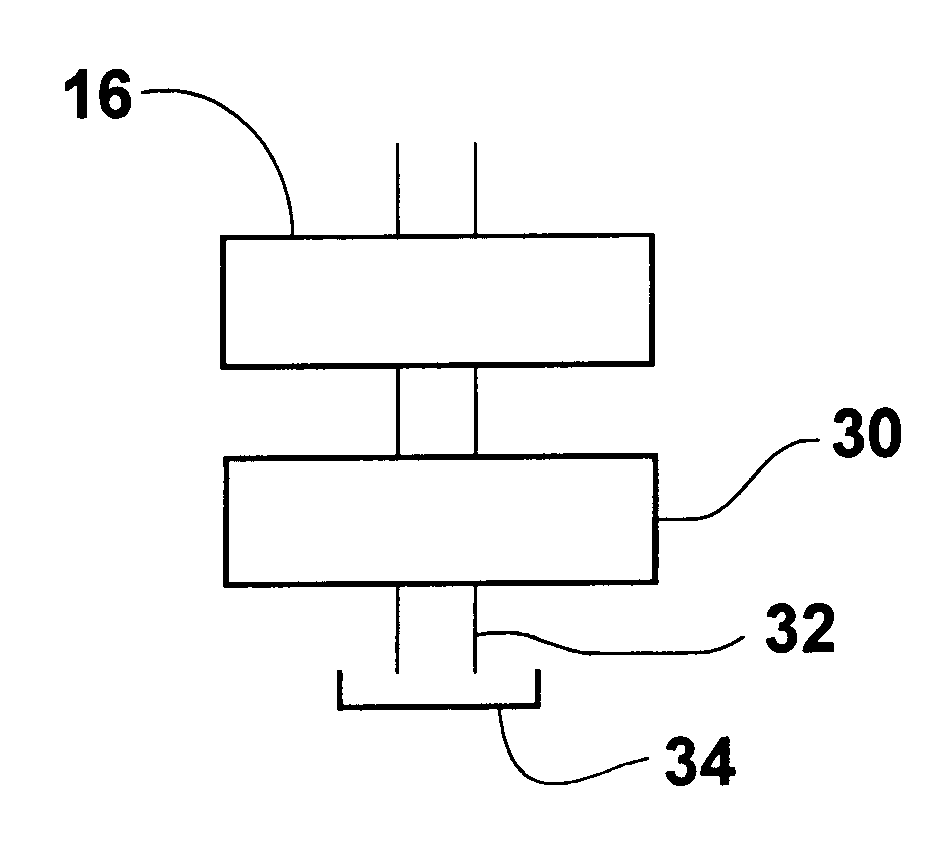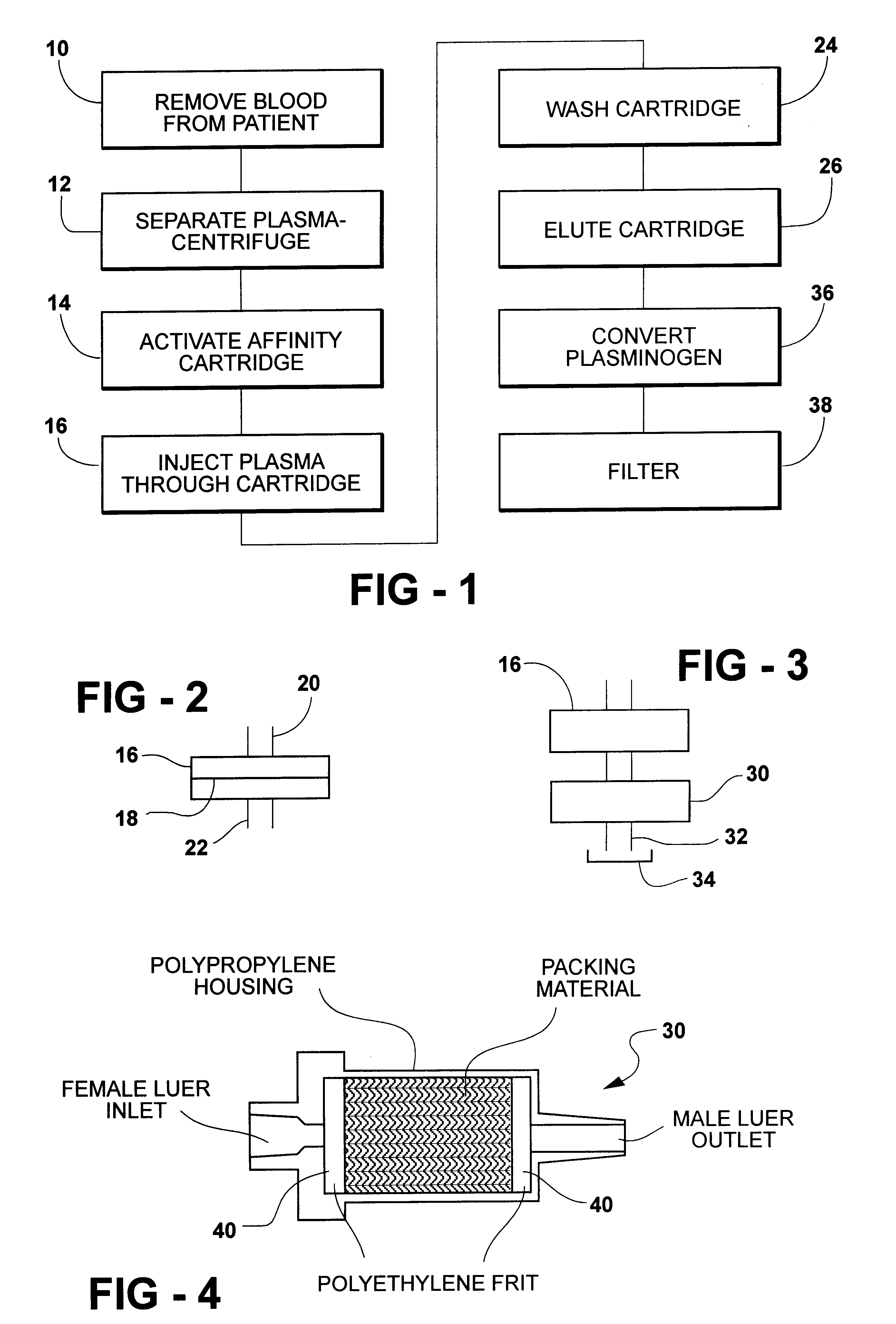Kit for purification of plasmin
a technology for purifying kits and plasmin, which is applied in the direction of hydrolases, peptide/protein ingredients, depsipeptides, etc., can solve the problems of inability to identify unidentified whole blood sources, and inability to perform purification. , to achieve the effect of reducing the risk of infection, and reducing the effect of plasminogen
- Summary
- Abstract
- Description
- Claims
- Application Information
AI Technical Summary
Benefits of technology
Problems solved by technology
Method used
Image
Examples
example
A kit, as described above, designed for the rapid purification and activation of autologous plasmin was utilized. Blood is drawn into 3 yellow capped (ACD) tubes which can be supplied as part of the kit. The tubes containing the blood are centrifuged at 750.times.g for fifteen minutes to obtain plasma separation. A sterile 21 ga needle can be attached to a 10 cc syringe (Syringe A), the needle inserted through the cap of the blood collection tube and the plasma aspirated. This step can be repeated for the second and third tubes until 10 cc of plasma are collected in Syringe A. All syringes are sterile medical grade syringes.
The cation exchange disk can be pre-wetted by attaching a 10 cc syringe containing sterile water to the ion exchange device and injecting the contents of the syringe through the device. The water is then discarded and the cation exchange device can be set aside until the preactivation step.
The affinity cartridge is then attached to the end of syringe A and the pl...
PUM
| Property | Measurement | Unit |
|---|---|---|
| time | aaaaa | aaaaa |
| pore size | aaaaa | aaaaa |
| diameter | aaaaa | aaaaa |
Abstract
Description
Claims
Application Information
 Login to View More
Login to View More - R&D
- Intellectual Property
- Life Sciences
- Materials
- Tech Scout
- Unparalleled Data Quality
- Higher Quality Content
- 60% Fewer Hallucinations
Browse by: Latest US Patents, China's latest patents, Technical Efficacy Thesaurus, Application Domain, Technology Topic, Popular Technical Reports.
© 2025 PatSnap. All rights reserved.Legal|Privacy policy|Modern Slavery Act Transparency Statement|Sitemap|About US| Contact US: help@patsnap.com


